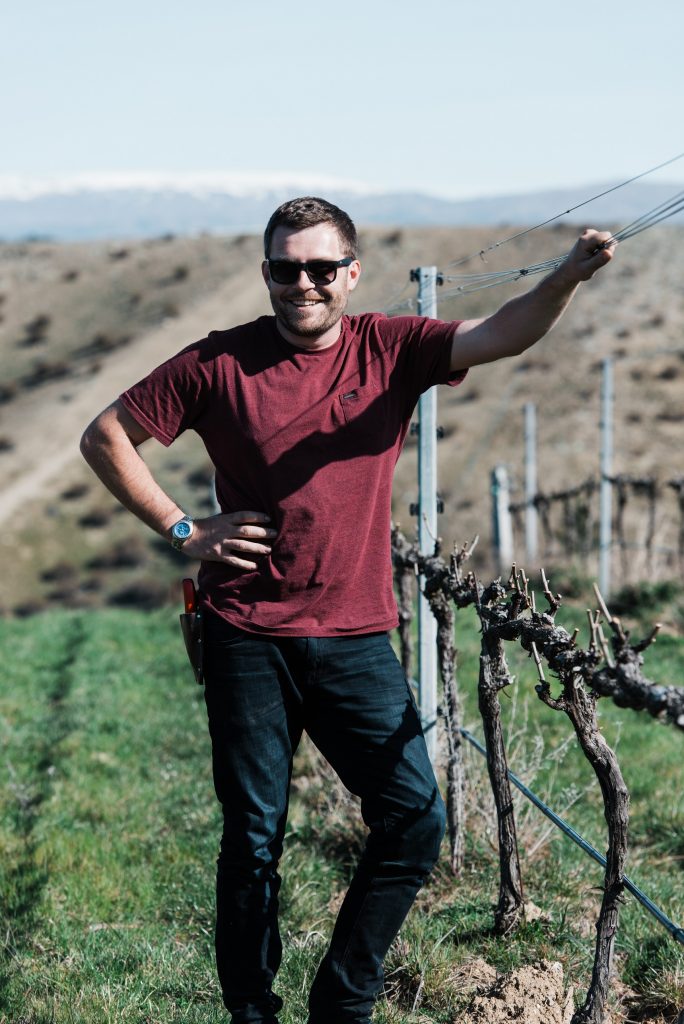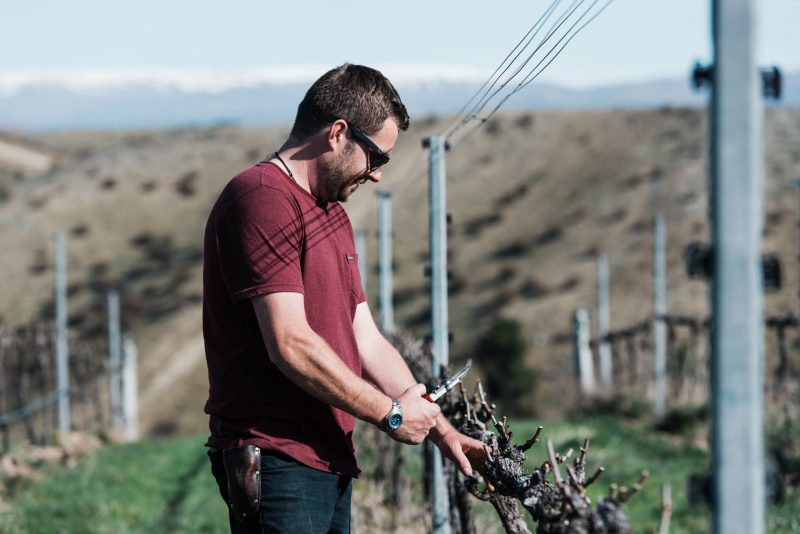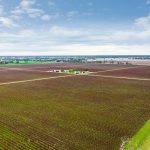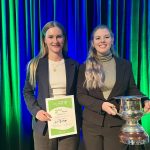After having worked in the wine sector for a decade, New Zealand viticulturist Simon Gourley has made his mark on the local industry.
Journalist Samuel Squire spoke to Simon to learn about his career and accomplishments to date, and what he finds rewarding about his role in the vineyard and beyond.
Currently based at Central Otago’s DomaineThomson Wines, viticulturist and vineyard manager Simon Gourley’s journey to get to where he is today has been one of hard work, determination and pushing beyond doubt.
Simon revealed that when he first embarked on his studies in viticulture, he had never had any direct experience with either winemaking or grapegrowing.
“Viticulture was a totally new concept for me and, at times, I doubted if it was really the right choice, but I stuck with it and am very glad I did so,” he revealed.
“I studied at Lincoln University and organics was a fairly new, and kind of laughed at, concept to many people there.
“But I knew it was the path I wanted to head down. I was met by some resistance along the way, which made it challenging. But nowadays, I think times have changed from what I experienced.”
Simon’s first experience in the viticultural world came during his first university summer break when he worked at Two Paddocks in Central Otago.
Soon after that initial exposure to the wine life, he says he became almost entranced and hooked on it.
“One summer turned into every holiday thereafter, and I even skipped a few days of class to be there and working for harvest,” he said.
“After university, I joined Two Paddocks full time for several years, then went to South Australia and worked for Treasury Wine Estates in Wrattonbully.
“When I returned to New Zealand, I took a role as assistant winemaker at Central Otago Wine Company for a couple of years to learn that side of the industry better. Now I’m back in the vineyard as viticulturist for Domaine-Thomson Wines in Central Otago.
“I have been working in the wine industry in one way or another for 10 years now. Time sure flies by!”
Inspired by wine history
Simon had grown up with a link to a snippet of wine history, with the block of land that his grandparents owned having some serious wine heritage to it; that was one of the embryonic factors behind his interest in the wine industry.
“When I was younger, my grandparents owned a small block of land that was once an original vineyard site for Central Otago back in the mid-1800s,” he said.
“The original winery/barn still existed and stories of a hidden underground wine cellar somewhere on the property first got me interested in wine.”

Simon’s career in the wine sector has not been a ‘behind-the-scenes’ journey; as he puts it, “Why would I want to be anywhere else?”
“I’ve been very fortunate to win both the Young Viticulturist and Young Horticulturist titles in 2019 in my career so far,” he explained.
“I was shocked to win both titles as the competitions were fierce, but I am also very proud of myself – they’re great achievements to have under my belt.
“Another great moment was when I was offered my current role as a viticulturist. I have been working very hard for years to reach that position and have a chance to put my stamp on the land and wine.”
Simon believes the wine industry of New Zealand is not only an exciting place to be, but that being part of the wine producing community is also highly rewarding.
Variety of work
He says the variety of work he does day-to-day is one of his favourite aspects of his job, while the wine itself is also gratifying.
“One day I’ll be servicing a tractor, the next I’m pouring – and drinking – wine with the elite,” he remarked.
“It really is an exciting time for the New Zealand wine industry – we are doing really well for ourselves. Vines are starting to hit a good age and we are really defining our own style and place amongst the other top producing countries.
“At Domaine-Thomson, we are Pinot Noir focused. Currently we have one vineyard site in Lowburn, Central Otago, with 14 hectares of Pinot Noir of various clones and rootstocks.
“We are also certified organic with BioGro and are a practicing biodynamic site.”
Simon revealed that his stint in Burgundy “many moons ago” may have proved fruitful for his role at Domaine-Thomson.
“I also managed to squeeze in a vintage at Domaine du Comte Liger Belair in Burgundy,” he said.
“We’re very fortunate to own 2.5 hectares of vines in Burgundy across several appellations. We have the wines made there and shipped over.”
In a glimmer of hindsight, Simon compared his work over the years from scale to skill and says what is learned, sticks with you as a grower.
“I worked as a vineyard hand in Australia for a while on a 250 hectare block. The scale of going from there to the 14 hectares I now look after in inconceivable,” he remarked.
“On the other hand, I learnt a great deal which I still use to this day.”
Challenges on the job
Nowadays, though, it isn’t the scale of the vineyard that remains a challenge for Simon as a vineyard manager and as a viticulturist.
He revealed that fruit growers of all statures compete for the same work force hires at the same times.
“Staffing for harvest along with other vineyard work can be a big challenge. It’s not just hiring staff that’s the issue, because we rely heavily on backpackers for our staff needs, they require accommodation or a space for their vans to park,” he commented.
“We have limited space so retaining good workers can be difficult, especially when competing with high paying cherry growers.”
Simon says his worries don’t just revolve around staffing issues and, like many in the agricultural sector, a changing climate is a concern.
“We are looking at how we will manage our crops in the coming years if temperatures rise. It is looking like we may not be able to grow Pinot Noir so successfully if our sites become too hot,” he said.
“On the other hand, it does open up some traditionally colder and un-plantable areas for site development.”
He identifies another challenge as the need to continually keep up with a changing industry and available technology.
He believes that despite the enormous amount of data at growers’ fingertips, making practical use of this is not necessarily a ‘piece of cake’.
“Thanks to continually developing knowledge, technology and practices, we have so much information available to us as growers; but being able to interpret it efficiently and wisely is another thing.
“I think we forget that wine has been grown and drunk successfully for centuries without the use of all the advancements we rely on today.”
Simon spoke about what his future may have in store for him and revealed the goals he’s working towards.
“I think, at the moment, my main goal is to be a leader in organic growing practices,” he said.
“I would also like to make my own wine one day soon – I miss the winery some days.
“I love living in Central Otago. These are exciting times for us at Domaine-Thomson, with the expansion into Burgundy and our new cellar door which [opened] in February 2020.”
This article was originally published in the March issue of The Australian & New Zealand Grapegrower & Winemaker. To find out more about our monthly magazine, or to subscribe, click here!





















